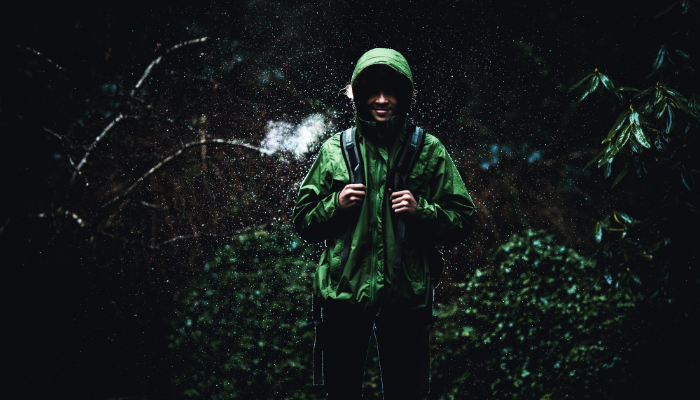Backpacks are versatile and essential for various activities, from daily commutes to outdoor adventures. The way a backpack opens can significantly impact its functionality and suitability for different purposes. Here’s a guide to common backpack opening styles and their best uses:
1. Top-Loading Backpacks
- Design: The main compartment opens from the top, often secured with a drawstring or zipper.
- Best Uses:
- Hiking and Outdoor Adventures: Great for packing bulky items like sleeping bags, tents, or clothing.
- Everyday Use: Ideal for students or commuters carrying books, laptops, or gym gear.
- Pros: Simple design, durable, and often water-resistant.
- Cons: Accessing items at the bottom can be inconvenient.
2. Panel-Loading (Front-Loading) Backpacks
- Design: The main compartment opens like a suitcase, with a zipper running along three sides of the bag.
- Best Uses:
- Travel: Perfect for organizing clothes, toiletries, and travel essentials.
- Work or School: Easy access to documents, laptops, and other items.
- Pros: Easy to organize and access items; often includes multiple compartments.
- Cons: May not be as streamlined for heavy loads.
3. Clamshell Backpacks
- Design: Similar to panel-loading but opens fully like a clamshell, providing complete access to the main compartment.
- Best Uses:
- Travel: Excellent for packing cubes and organizing gear.
- Photography: Ideal for camera equipment and accessories.
- Pros: Maximum accessibility and organization.
- Cons: Bulkier design and less suitable for uneven loads.
4. Roll-Top Backpacks
- Design: The top of the bag rolls down and secures with buckles or straps, creating a waterproof seal.
- Best Uses:
- Cycling or Commuting: Keeps items dry and secure.
- Outdoor Activities: Great for carrying gear in wet conditions.
- Pros: Highly water-resistant, expandable capacity.
- Cons: Accessing items can be slower compared to other styles.
5. Zippered Backpacks
- Design: Features multiple zippered compartments for organized storage.
- Best Uses:
- Urban Use: Perfect for professionals or students who need quick access to gadgets and supplies.
- Day Trips: Convenient for carrying snacks, water, and small items.
- Pros: Highly organized and secure.
- Cons: Zippers can fail over time, and the design may not be as rugged.
6. Drawstring Backpacks
- Design: A simple bag with a drawstring closure at the top.
- Best Uses:
- Casual Use: Great for light loads like gym clothes or a trip to the beach.
- Minimalist Travel: Suitable for carrying essentials on short outings.
- Pros: Lightweight, compact, and easy to carry.
- Cons: Limited security and organization; not ideal for heavy or bulky items.
7. Duffel-Style Backpacks
- Design: Combines a backpack with a duffel bag, often featuring a wide opening and backpack straps.
- Best Uses:
- Sports: Perfect for carrying gym gear or sports equipment.
- Weekend Trips: Spacious enough for short getaways.
- Pros: Versatile and spacious.
- Cons: Can be bulky and less ergonomic for long-term wear.
8. Hydration-Compatible Backpacks
- Design: Features a dedicated sleeve for a hydration bladder and a tube port.
- Best Uses:
- Hiking and Running: Keeps you hydrated on the go.
- Outdoor Adventures: Ideal for long treks or bike rides.
- Pros: Hands-free hydration and often includes additional storage.
- Cons: Limited use for non-outdoor activities.
9. Convertible Backpacks
- Design: Can transform into a tote, shoulder bag, or briefcase.
- Best Uses:
- Travel: Adapts to different carrying needs.
- Work or School: Offers versatility for professional or casual settings.
- Pros: Highly versatile and stylish.
- Cons: May sacrifice durability for flexibility.
10. Expandable Backpacks
- Design: Features expandable compartments for extra storage when needed.
- Best Uses:
- Shopping or Errands: Great for carrying unexpected purchases.
- Travel: Provides flexibility for souvenirs or extra gear.
- Pros: Adjustable capacity.
- Cons: Can become bulky when expanded.
Choosing the Right Backpack Opening Style
When selecting a backpack, consider:
- Purpose: What will you primarily use it for?
- Accessibility: How often will you need to access your items?
- Capacity: How much do you need to carry?
- Durability: Will it withstand your intended use?
By matching the opening style to your needs, you can ensure your backpack is both functional and convenient.



